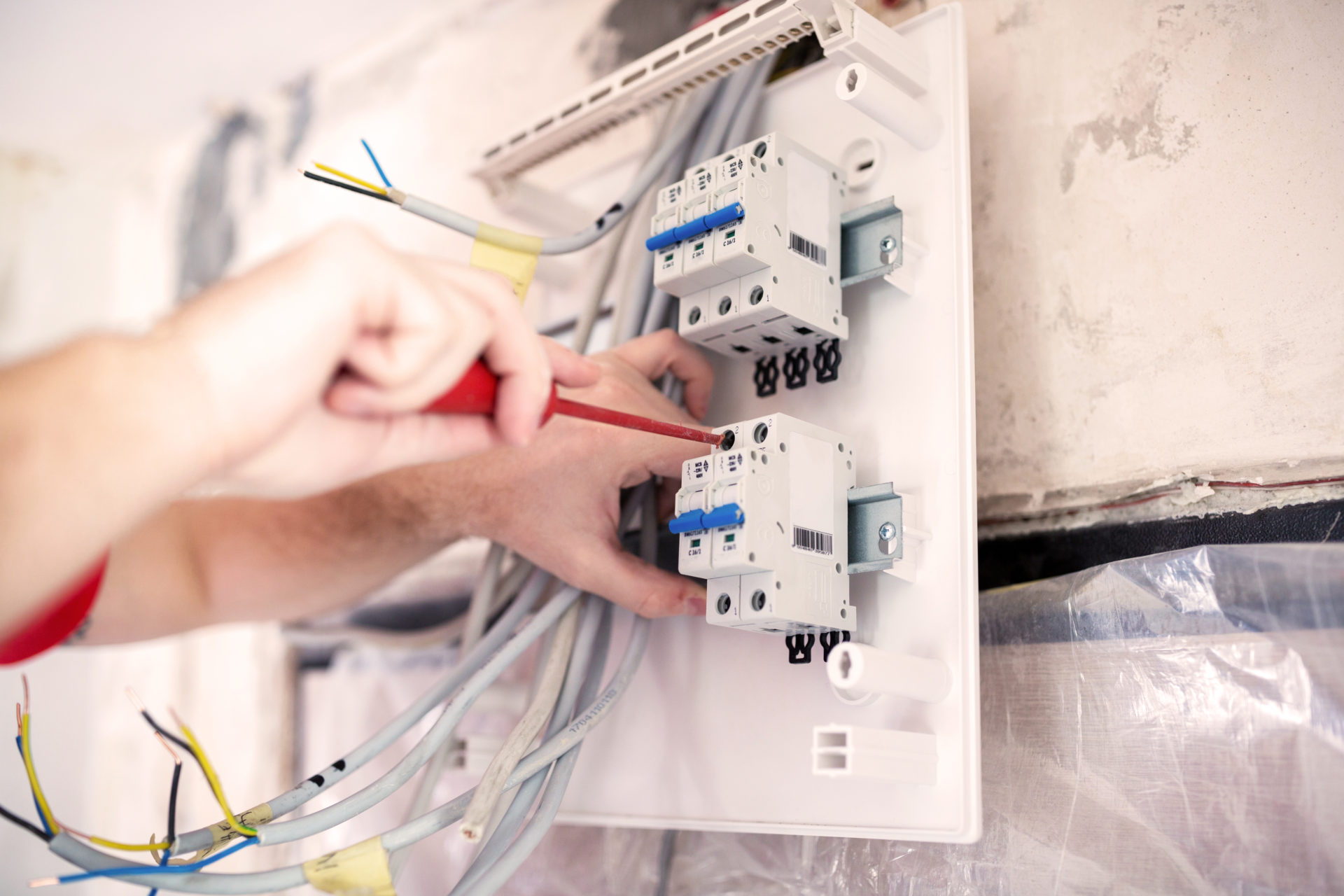Building safety laws can be confusing and hard to keep track of. So where do you stand on electrical safety as a landlord (freeholder) of a block of flats, or as the residents’ management company acting on the freeholder’s behalf?
In a block of leasehold flats, it is the communal area you are responsible for.
Communal areas of flats fall under the commercial side of electrical installation, they require an EICR (Electrical Installation Condition Report) at least every 5 years. This applies even if you only have a few hallway and landing lights alongside the fire alarm and emergency lighting installation. Having an up-to-date EICR may be a condition of your insurance policy.
In a block of owner-occupied leasehold flats, electrical installation beyond the individual flat door is the leaseholder’s responsibility; and the lease may well state that the flat should be kept in good and tenantable condition but is unlikely to specify an EICR! So, you may want to encourage leaseholders to check their own flats from time to time and you may be able to negotiate a good ‘block deal’ with a professional electrician when you get the common areas checked.
The law for landlords of privately rented flats is different and requires an EICR for electrical installation within the flat – and it is the sub-letting leaseholder’s responsibility to arrange for that before letting out the flat.
The law on electrical safety
Naturally, you have a ‘common duty of care’ to anyone who visits your property. There is also a legal framework with the Health and Safety at Work etc. Act 1974, the Electricity at Work Regulations 1989 (EAWR), and the Provision and Use of Work Equipment Regulations 1998 (PUWER).
Tee Property Institute, which trains and is the voice of professional managing agents freely provides more information at its Building Safety Hub.
Your duty to ensure the safety of electrical installations will probably be highlighted in your fire risk assessment, which you must undertake under the Regulatory Reform (Fire Safety) Order 2005 (FSO), which applies to all non-domestic premises and includes the communal areas of blocks of flats.
A fire risk assessment will typically ask:
- Are reasonable measures taken to prevent fires of electrical origin?
- Is the fixed installation periodically inspected?
- Is portable appliance testing carried out where appropriate?
- Does the electrical distribution within the common areas appear satisfactory and adequately protected?
- Are sockets, trailing leads, cables, and adapters adequately protected?
Any shortcomings will be highlighted in the Fire Risk Assessment Action Plan which will also indicate the level of risk and urgency of action.
Who can undertake an EICR?
Your electrical installations should be tested by a competent registered electrician. Ensure that an Electrical Installation Condition Report is issued and that any recommendations are implemented.
They will look at the earthing system, insulation, isolating devices, circuit breakers, and fuses, as well as the general condition of the wiring to ensure that your building meets the standards set by the Institution of Engineering and Technology Wiring Regulations.
What causes electrical fires?
The use of portable electric devices in common areas is probably relatively rare but of course, any you do have must be PAT tested. Your main concern will be the fixed wiring where common faults are faulty insulation and overheating.
Insulation: Modern wiring is insulated with durable PVC, but older rubber cables can become brittle with age or lead to insulation breakdown resulting in short circuits, sparks, and, in turn, fires in flats. Rats and mice also seem to like chewing on insulation!
Poor insulation can also result in metal surfaces which, if not adequately earthed, become live and potentially lethal.
Overheating: This usually occurs when installations are overloaded. Multi-adaptors or multi-socket extension leads are really designed to connect several low-power items, but large appliances and kettles are big power users. See the Which? Guide on avoiding overloading.
An overloaded circuit will lead to overheating of the socket and wires, and this can break down the insulation.
What can you do between EICR inspections?
Make time for visual inspections to look for wear and tear, corrosion, and damage as well as overloaded sockets and trailing leads.
Find out more about buildings insurance and fire risk assessment.
Disclaimer:
The sole purpose of this article is to provide guidance on the issues covered. This article is not intended to give legal advice, and, accordingly, it should not be relied upon. It should not be regarded as a comprehensive statement of the law and/or market practice in this area. We make no claims as to the completeness or accuracy of the information contained herein or in the links which were live at the date of publication. You should not act upon (or should refrain from acting upon) information in this publication without first seeking specific legal and/or specialist advice. Arthur J. Gallagher Insurance Brokers Limited accepts no liability for any inaccuracy, omission or mistake in this publication, nor will we be responsible for any loss which may be suffered as a result of any person relying on the information contained herein.
FP659-2024b
